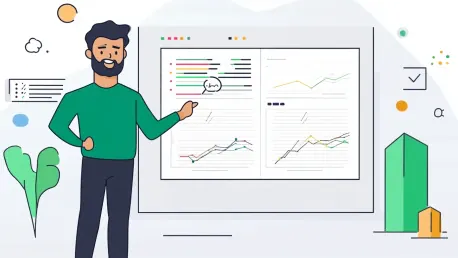The life sciences industry is undergoing a transformative shift, particularly in the realm of clinical data analysis. This dynamic transition is driven by the increasing need to reduce costs and spark innovation within data science teams. However, while the adoption of open-source tools offers numerous advantages, it also introduces a complex array of challenges, especially within the stringent regulatory framework that governs the industry. The balance between embracing cutting-edge open-source technologies and ensuring strict compliance is becoming an essential aspect of modern life sciences research and development.
The Traditional Reliance on SAS
Historically, the life sciences industry has heavily depended on SAS, a proprietary software system well-regarded for its pre-validated compliance with regulatory standards. The use of SAS has been instrumental in maintaining consistency and uniformity across global teams, providing a comprehensive support system that ensures rapid troubleshooting, regular software updates, and expert guidance tailored to the industry’s specific needs. SAS’s standardized workflows are fundamental to maintaining data integrity and consistency, two critical elements in ensuring the reliability of clinical research outcomes.
The robust features of SAS, coupled with its dedicated support system, have made it a staple in the industry. The ability to address issues swiftly and offer tailored guidance has allowed life sciences organizations to focus on their core activities without the added burden of software-related challenges. Furthermore, the standardized nature of SAS workflows ensures that data handling and analysis processes remain consistent across different teams and regions, which is vital for large organizations operating on a global scale.
The Rise of Open-Source Tools
Despite the numerous advantages offered by SAS, there is a noticeable and growing shift towards the adoption of open-source tools like Python and R. These tools are increasingly favored for their versatility, advanced libraries for machine learning and predictive modeling, and active community support. Libraries such as TensorFlow and PyTorch enhance data analysis capabilities, enabling the examination of diverse datasets in ways that proprietary tools like SAS might not support. Open-source languages also facilitate global collaboration, as their code can be shared, peer-reviewed, and reproduced across teams, providing the essential flexibility required for innovative research initiatives that demand bespoke solutions.
The adaptability of open-source tools allows researchers to customize their analysis workflows to better suit the specific requirements of their projects. This level of customization is often not possible with proprietary systems, making open-source tools particularly attractive for cutting-edge research work. Additionally, the active communities surrounding these open-source languages contribute to a continuously evolving ecosystem of libraries and tools, ensuring that researchers have access to the latest advancements in data science and machine learning.
Challenges of Transitioning to Open Source
The transition to open-source tools in the life sciences sector is fraught with challenges that organizations must thoroughly consider. Ensuring reproducibility and auditability is paramount, given the stringent regulatory environment. Veteran data scientists who have long relied on SAS face the daunting task of retraining and adapting to new workflows that come with open-source tools. Furthermore, while open-source tools are free and flexible, they can sometimes introduce discrepancies that require careful management to prevent compromising data integrity and team collaboration.
The familiarity and comfort associated with SAS cannot be overlooked, as many data scientists have built their careers around its use. Moving away from such a well-entrenched tool necessitates substantial retraining, which can be both time-consuming and costly. Overhauling established workflows to integrate open-source tools also presents logistical challenges, as existing processes must be redefined to ensure that data remains consistent and reliable throughout the transition period.
A Hybrid Approach: Leveraging Both Proprietary and Open-Source Tools
To address the complexities of transitioning to open-source tools, a hybrid approach that leverages the strengths of both proprietary and open-source systems is suggested. This involves creating a unified environment that supports innovation while maintaining compliance features inherent to proprietary systems. Key strategies for achieving this balance include implementing robust version control, model tracking, and automated documentation systems. These measures ensure reproducibility and compliance, enhancing global team collaboration by providing centralized environments for sharing insights, code, models, and datasets.
The implementation of robust version control systems is essential for maintaining the integrity of data analysis workflows. Version control allows teams to track changes, revert to previous states, and collaborate effectively on code development. Model tracking and automated documentation systems further enhance transparency and reproducibility, ensuring that all aspects of data analysis can be audited and verified. By combining these strategies, organizations can foster a culture of shared knowledge and accelerate project timelines.
Scalable Computing Resources
As the volume and complexity of data science workloads continue to grow, the importance of scalable computing resources cannot be overstated. Integrating both cloud-based and on-premise infrastructure ensures that teams have access to the necessary computing power for machine learning, large-scale data analysis, and other resource-intensive tasks without compromising on security and regulatory compliance. This hybrid infrastructure approach allows organizations to balance the need for computational power with the stringent requirements of data security and regulatory compliance.
Cloud-based infrastructure offers the flexibility to scale resources up or down based on demand, providing an efficient and cost-effective solution for handling fluctuating workloads. On-premise infrastructure, on the other hand, offers greater control over data security and compliance, making it a critical component for sensitive or confidential data analysis tasks. By combining both types of infrastructure, organizations can optimize their computing resources to meet diverse project needs.
Case Studies: Leading Pharmaceutical Companies
Leading pharmaceutical companies like Roche and Novartis have already begun pioneering the use of open-source tools for regulatory submissions. Roche has addressed compliance and validation concerns through rigorous internal processes and close collaboration with regulatory bodies, demonstrating that open-source tools can be effectively integrated into a regulated environment. Novartis has shown a commitment to establishing validation frameworks for clinical trials by actively participating in initiatives like the R Validation Hub. These case studies illustrate that with the right strategies and collaborations, the integration of open-source tools in the life sciences field is both feasible and beneficial.
Roche’s approach to compliance and validation involves extensive testing and quality control measures to ensure that open-source tools meet the required standards. Regular collaboration with regulators allows for continuous feedback and improvement, ensuring that the tools remain compliant while supporting innovative research. Novartis’s involvement in the R Validation Hub highlights the importance of industry-wide initiatives in establishing best practices and standards for the use of open-source tools in clinical research.
Steps for a Successful Transition
The life sciences industry is undergoing a significant transformation, especially in clinical data analysis. This shift is largely driven by the pressing need to cut costs and foster innovation within data science teams. Open-source tools play a pivotal role in this evolution, offering numerous benefits like flexibility and cost efficiency. However, with these advantages come a host of challenges, particularly the difficulty of maintaining strict compliance with stringent industry regulations.
The adoption of cutting-edge open-source technologies requires a delicate balance. Life sciences companies must stay ahead in innovation while ensuring they do not breach any regulatory guidelines. These guidelines are crucial for patient safety, data integrity, and the overall quality of research outcomes. The challenge lies in harnessing the potential of open-source tools while navigating the complex regulatory landscape that governs the industry.
Enhancing expertise in both regulatory compliance and open-source technology is essential for modern life sciences research and development. This dual focus not only helps in adhering to regulatory standards but also maximizes the potential of data analysis innovations. In conclusion, the life sciences sector is at a pivotal juncture where the drive for cost reduction and innovation must be carefully balanced with the obligation to meet stringent regulatory requirements. This balance will define the future of research and development in the industry.









